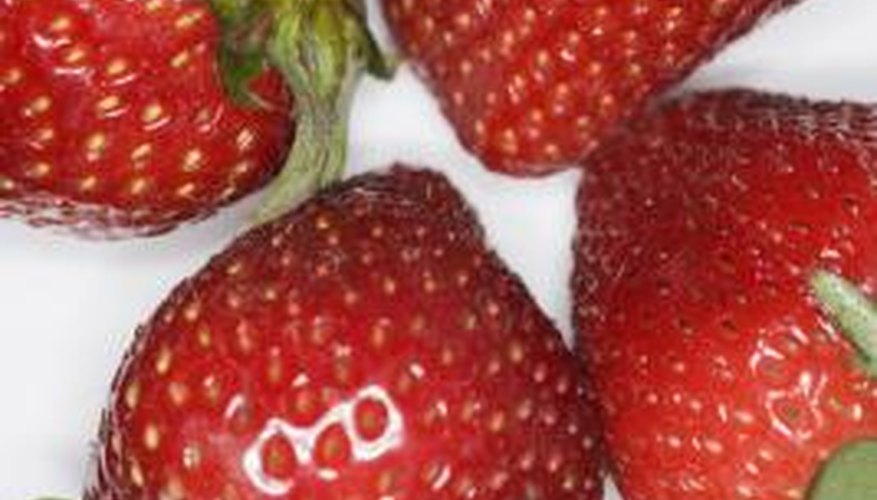Few things are more frustrating than nurturing a plant only to find its fruit spoiled before it is ready for harvest. Strawberry growers face this when berries become soft and mushy while still growing on the plants. Fruit that is mushy while immature usually is plagued by some type of fungal infection. Proper cultural practices can limit fruiting and fruit-quality problems such as rot; determining the exact type of rot indicates the best treatment options.
Stem End Rot
Stem end rot, caused by the fungus Dendrophoma obscurans, attacks new leaves in April and fruit later when it begins to form. The fungus infects the strawberry's calyx, or fruit cap, which turns brown. It progresses to the inside of the fruit, causing it to rot. A significant portion of a strawberry crop can be ruined if the fungus is not controlled. It can be addressed preventatively with fungicide applications when leaves expand in spring. Applying fungicide throughout the rest of the season to control grey mould also will contain stem end rot.
- Stem end rot, caused by the fungus Dendrophoma obscurans, attacks new leaves in April and fruit later when it begins to form.
Gray Mold
Gray mould, also known as botrytis blight or botrytis fruit rot, is caused by the Botrytis cinerea fungus. The fungus first attacks blossoms, where spores form, then spreads to young, still ripening fruit. Gray mould creates small, water-soaked areas on fruits; grey, fuzzy mould soon appears on these watery spots. Botrytis fungus develops best during humid, rainy weather and overwinters in plant debris. Control grey mould with a fungicide application every week or so beginning at first bloom.
- Gray mould, also known as botrytis blight or botrytis fruit rot, is caused by the Botrytis cinerea fungus.
- The fungus first attacks blossoms, where spores form, then spreads to young, still ripening fruit.
Leather Rot
Leather rot is a fruit disease caused by the fungus Phytophthora cactorum. If fruit clusters are touching standing water on the ground after long, warm rains the berries can turn grey-brown and become mushy within a day or two. This disease spreads quickly and can cause entire fields to give off a rotten stench. Infected berries eventually become dry and leathery; cut fruits show dark streaks radiating from the centre of the fruit outward. One of the best controls used to prevent leather rot is placing straw mulch on the ground to keep berries out of water pooled on the soil surface.
- Leather rot is a fruit disease caused by the fungus Phytophthora cactorum.
- If fruit clusters are touching standing water on the ground after long, warm rains the berries can turn grey-brown and become mushy within a day or two.
Preventing Rots
Proper cultural practices will lessen or prevent the impact of fungi on a strawberry crop. Providing ample space between plants and rows allows greater air circulation and limits humidity, discouraging fungal spread and growth. Good drainage also limits standing water and lowers humidity levels. Additionally, since the fungi can overwinter in plant debris, remove dead leaves, diseased plant parts and mulch from the bed each fall to reduce infections.
- Proper cultural practices will lessen or prevent the impact of fungi on a strawberry crop.
- Providing ample space between plants and rows allows greater air circulation and limits humidity, discouraging fungal spread and growth.
